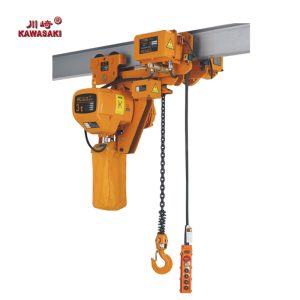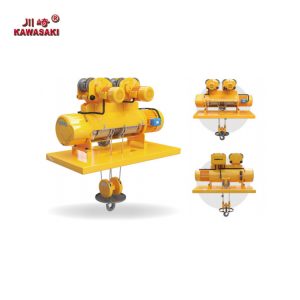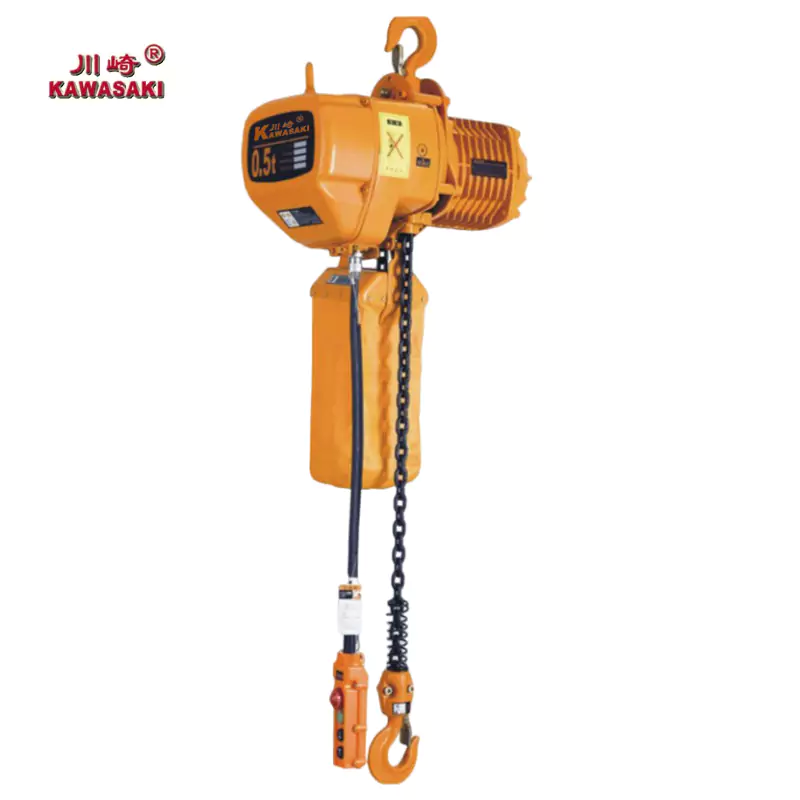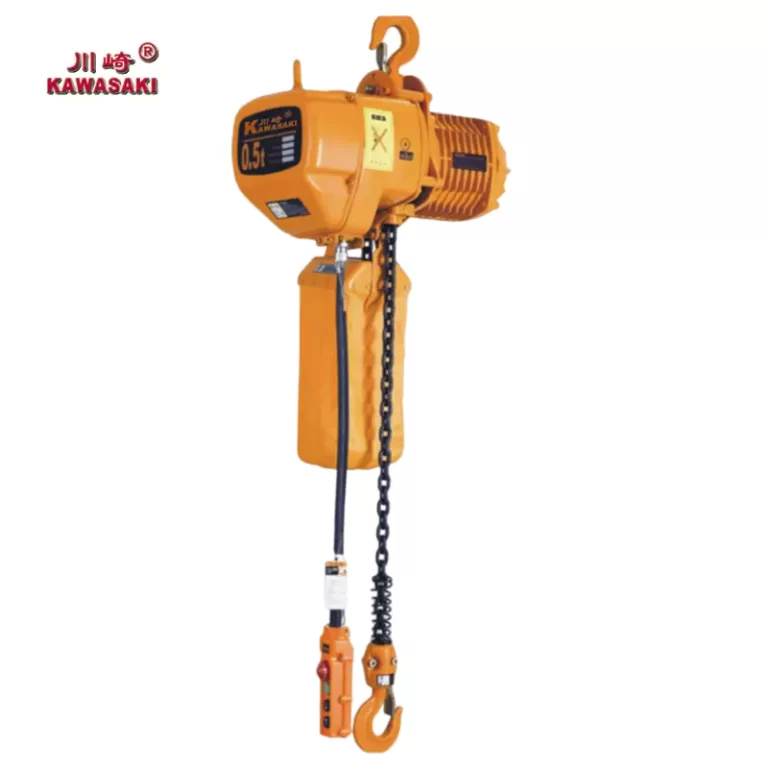Electric Hoist Use Instructions and Precautions
An electric hoist is an essential tool in various industrial applications, providing an efficient way to lift heavy loads. These devices are commonly used in construction sites, warehouses, factories, and garages. The following guide will cover detailed instructions on how to properly use an electric hoist, along with important safety precautions to ensure its safe operation.
Introduction to Electric Hoists
Electric hoists are machines used for lifting or lowering heavy loads using electric motors. They typically consist of a drum or a chain wheel that is powered by an electric motor, which drives a rope or chain to lift the load. The main types of electric hoists are wire rope hoists and chain hoists, with each having its specific applications. Electric hoists can be mounted on a fixed structure or used with a trolley that moves along a beam, making them highly versatile for various lifting tasks.
How to Use an Electric Hoist
- Preparation Before Use
- Inspect the Hoist: Always perform a visual inspection of the hoist before using it. Check for any signs of wear, damage, or mechanical issues. Look at the chain, rope, hook, motor, and control system. If any defects are found, stop using the hoist and have it serviced.
- Verify Load Capacity: Ensure that the hoist is suitable for the load you intend to lift. Check the nameplate or the manufacturer’s documentation for the maximum weight the hoist can handle. Never exceed the hoist’s rated capacity.
- Check the Power Source: Verify that the hoist is properly connected to a reliable power source. Ensure that the electrical supply is stable, and that cables are properly secured and free from damage.
- Environmental Conditions: Make sure that the hoist is being used in an environment appropriate for its design. Check the temperature range, humidity levels, and whether the hoist is being used outdoors in conditions such as rain or snow, which could affect its functionality.
- Operation
- Position the Load: Before lifting, place the load beneath the hoist’s hook or lifting mechanism. Ensure the load is balanced and properly secured to the hook to avoid swinging or tipping.
- Control Mechanism: Electric hoists typically come with a pendant or a wireless remote control. Familiarize yourself with the control buttons before use:
- Up Button: Raises the load.
- Down Button: Lowers the load.
- Emergency Stop: Halts the hoisting operation immediately in case of an emergency.
- Load Limit Switch: Prevents the hoist from lifting beyond a certain height to avoid damaging the equipment or the load.
- Lifting the Load: Press the up button to begin lifting. Make sure the load rises smoothly, and monitor its movement to ensure it is steady and does not swing. Always lift the load directly upward and avoid jerking movements.
- Lowering the Load: Press the down button to lower the load slowly and carefully. Ensure that the load descends gently to avoid sudden impacts that could damage the hoist or the load.
- Stop the Hoist: Always stop the hoist when the load reaches the desired position. If the hoist has a limit switch, it will automatically stop once the load has reached the upper or lower limit.
- Transporting the Load
- If the hoist is mounted on a trolley or rail system, ensure that the track or beam is clear of obstacles before moving the load.
- When moving the hoist, avoid abrupt stops or starts, as this could cause the load to swing or become unbalanced.
- Keep an eye on the load during transportation to ensure it remains steady and does not shift. If necessary, adjust the lifting cable or chain to maintain balance.
Precautions During Use
- Load Safety
- Balanced Load: Ensure the load is properly balanced before lifting. Improperly balanced loads can cause the hoist to become unstable and increase the risk of tipping or swinging.
- Secure the Load: Always make sure the load is securely attached to the hook before lifting. Use slings, shackles, or lifting beams where necessary, and check for any fraying or wear on the lifting apparatus.
- Do Not Overload: Never exceed the hoist’s rated load capacity. Overloading can damage the hoist’s motor, reduce its lifespan, and compromise safety.
- Even Lifting: Always use proper techniques when lifting. If the hoist allows for two or more hooks, ensure the load is evenly distributed across all lifting points.
- Operator Safety
- Training and Familiarization: Ensure that all operators are properly trained in the safe use of the electric hoist. They should be familiar with the controls, load limits, and emergency procedures.
- Personal Protective Equipment (PPE): Operators should wear appropriate PPE, such as gloves, hard hats, and safety shoes. In high-risk environments, additional PPE like eye protection and hearing protection may also be required.
- Never Stand Under a Load: Under no circumstances should an operator or bystanders stand directly beneath a raised load. In the event of a mechanical failure, the load could fall, leading to serious injuries or fatalities.
- Clear Work Area: Maintain a safe working environment by keeping the area under and around the hoist clear of obstacles and personnel.
- Electrical Safety
- Proper Grounding: Ensure the hoist is correctly grounded to prevent electrical shock hazards.
- Regular Electrical Inspections: Periodically inspect the electrical wiring, controls, and motor for signs of wear or damage. Replace any frayed cables or faulty components immediately.
- Avoid Wet Conditions: Do not operate electric hoists in wet or humid environments unless the hoist is specifically rated for such conditions. Water can cause electrical short circuits or other malfunctions.
- Maintenance and Servicing
- Routine Maintenance: Perform regular maintenance on the hoist to ensure its smooth operation. This includes lubricating the chain, inspecting the motor, checking the brake system, and cleaning the equipment.
- Frequent Inspections: Conduct thorough inspections of the hoist before each use. Look for any signs of wear or damage, including cracks in the frame, damaged hooks, or frayed ropes or chains.
- Periodic Servicing: Have the hoist serviced by qualified professionals at regular intervals as per the manufacturer’s recommendation. This may include checking the motor, replacing worn-out parts, and ensuring all mechanical components are functioning correctly.
- Storage
- Proper Storage: When not in use, store the hoist in a dry, cool place, away from dust, moisture, and extreme temperatures. Ensure that the hoist is properly secured to prevent accidental damage.
- Protecting the Chain/Rope: If the hoist uses a chain or rope for lifting, make sure it is neatly coiled and stored to avoid kinks or tangles that could affect performance.
Additional Considerations and Best Practices
- Environmental Factors
- Temperature Extremes: Hoists are typically designed for specific temperature ranges. Ensure that the hoist is used within the recommended operating temperature to prevent overheating or freezing of components.
- Corrosive Environments: In environments where the hoist might be exposed to chemicals, salt, or other corrosive substances, ensure the hoist is corrosion-resistant or take measures to protect it from rust.

- Avoiding Sudden Movements
- Always operate the hoist smoothly, avoiding sudden jerks or movements, which can damage the hoist and may cause the load to swing uncontrollably.
- Use of Limit Switches
- Ensure that the limit switches are in proper working condition. These switches help prevent the hoist from lifting the load too high or lowering it too far, thus protecting the hoist from mechanical damage.
Conclusion
Electric hoists are powerful tools that enhance productivity by providing a safe and efficient means to lift heavy objects. However, it is essential to follow proper operating procedures and adhere to safety precautions to prevent accidents, protect equipment, and ensure the longevity of the hoist. Operators should always inspect the hoist before use, lift within the rated capacity, and follow safe work practices. With regular maintenance and proper care, an electric hoist can be a reliable and indispensable tool in various industrial and commercial settings.


